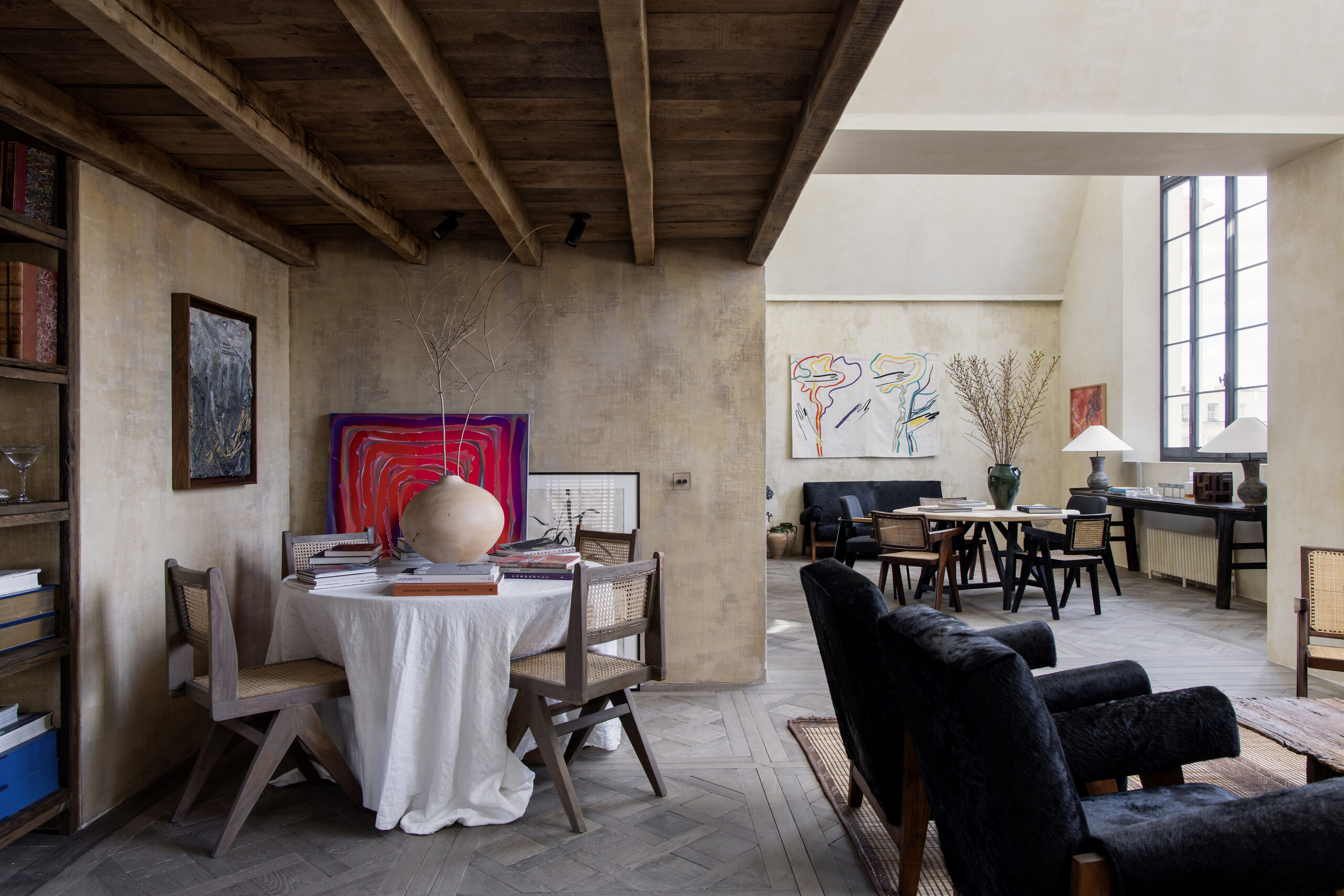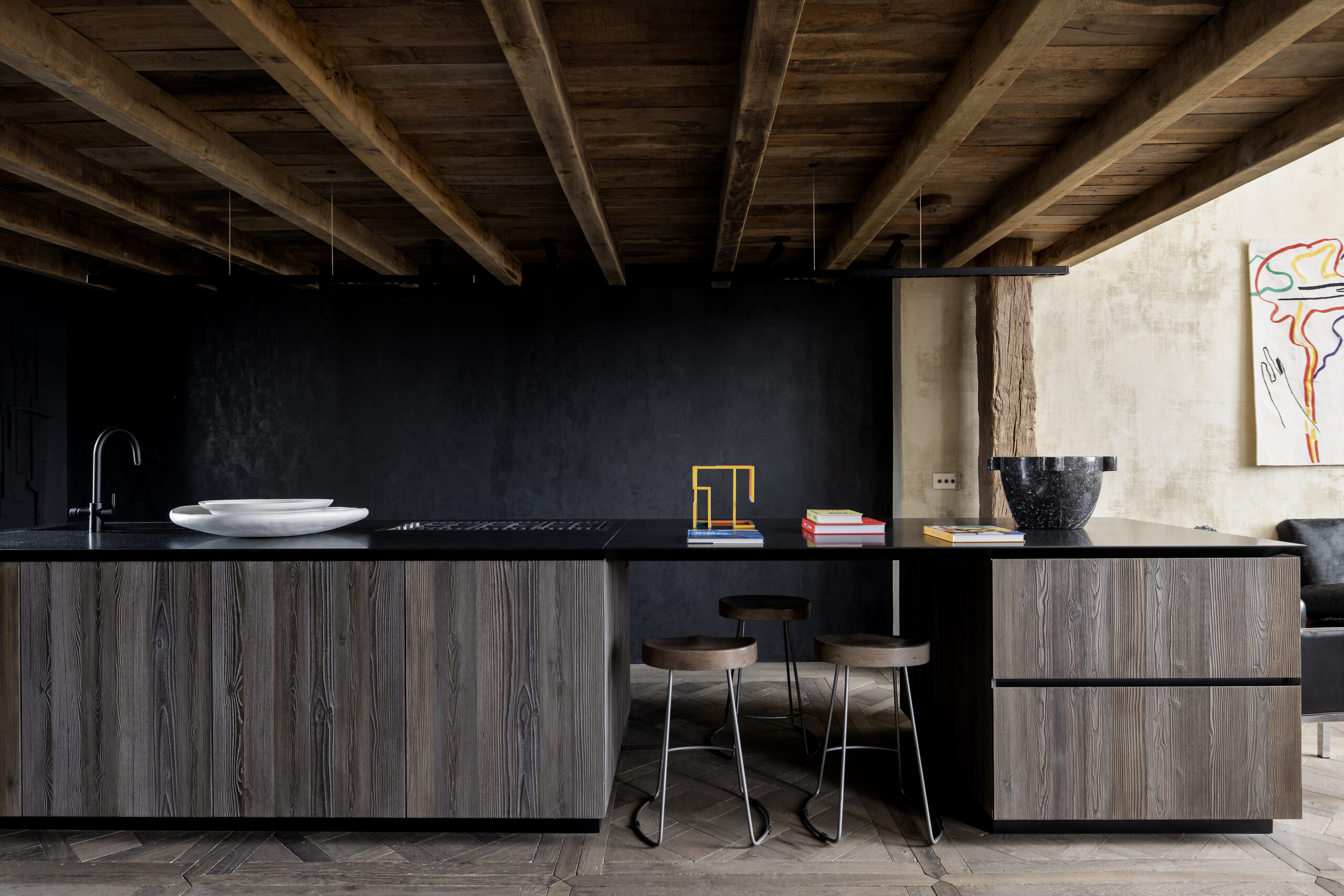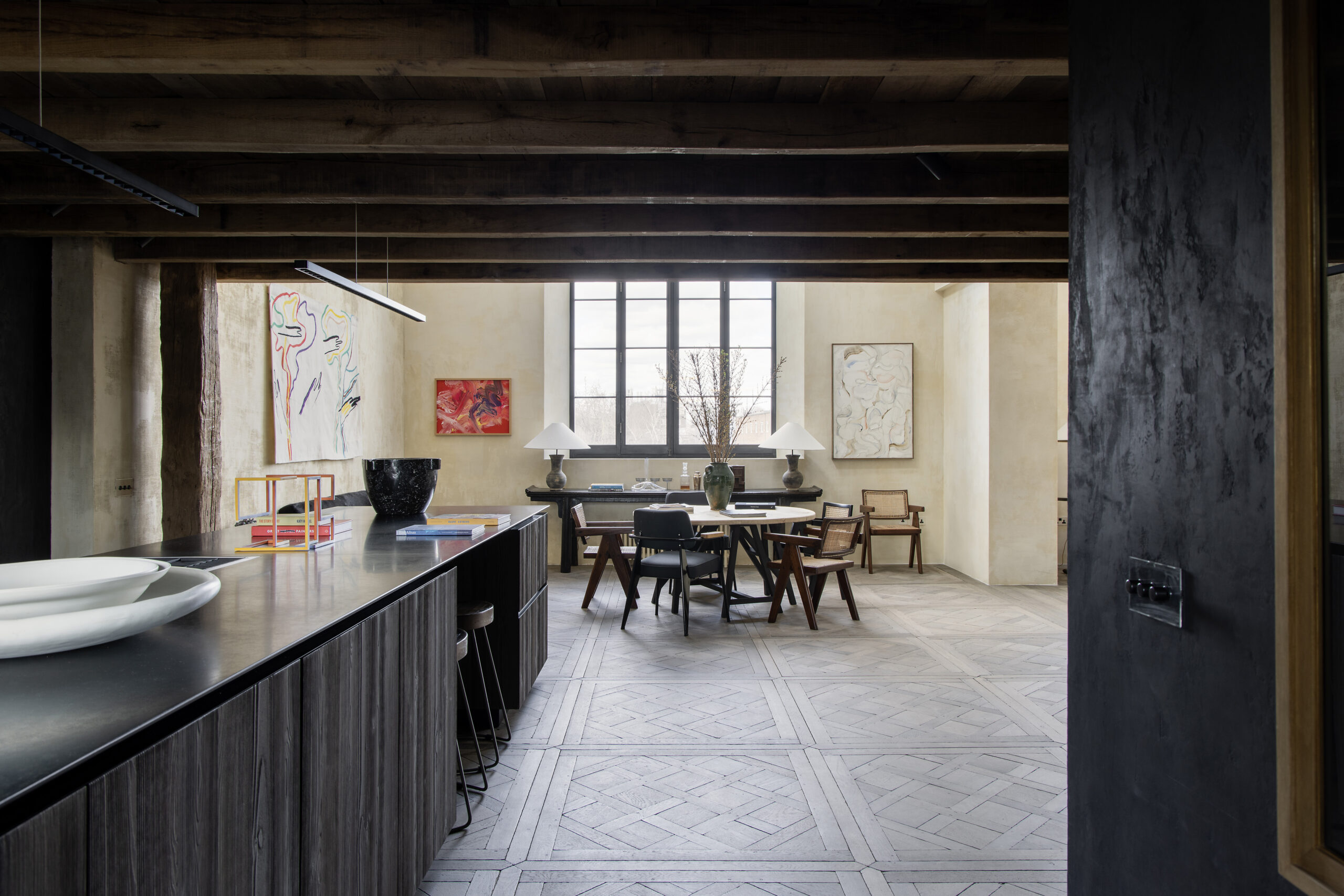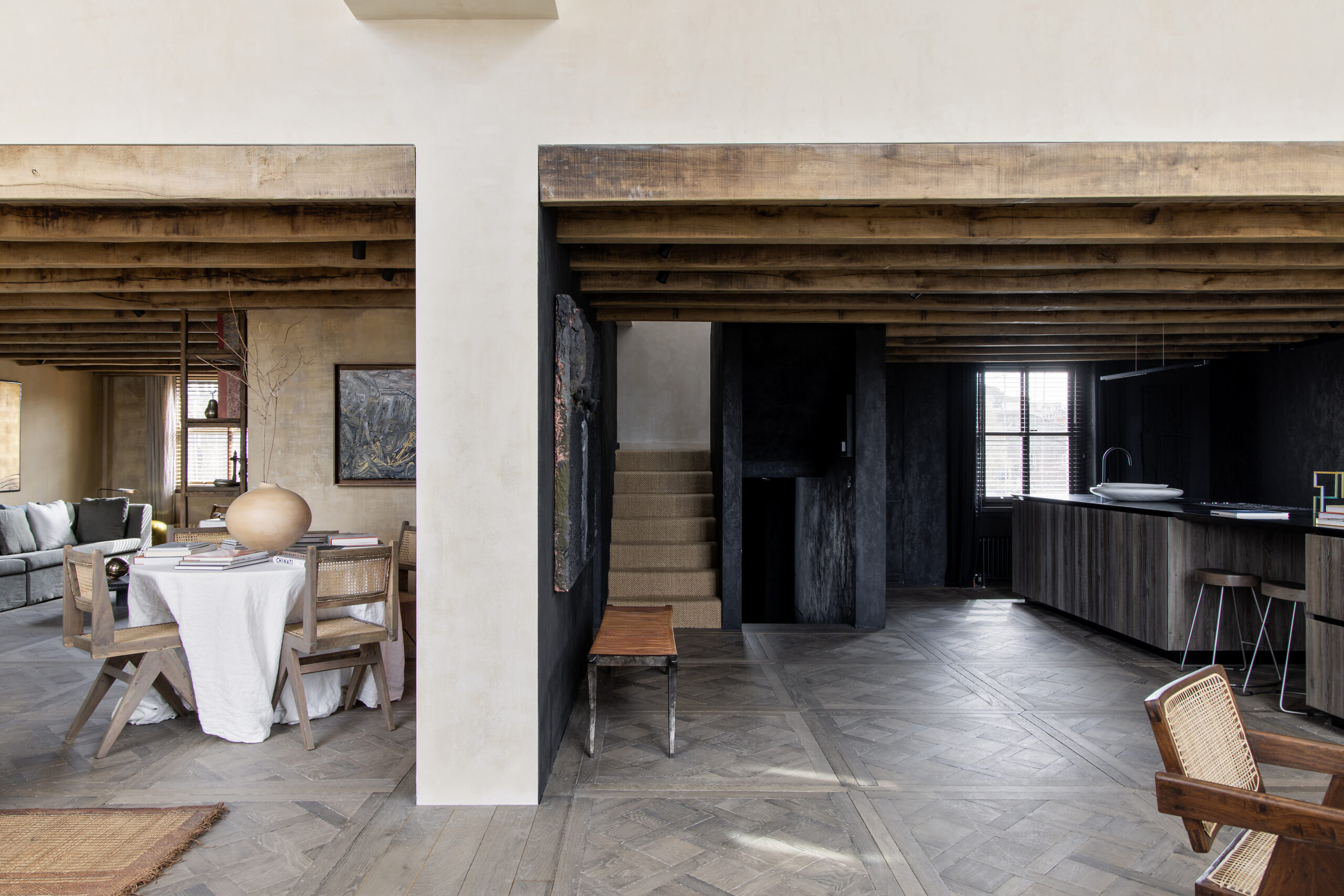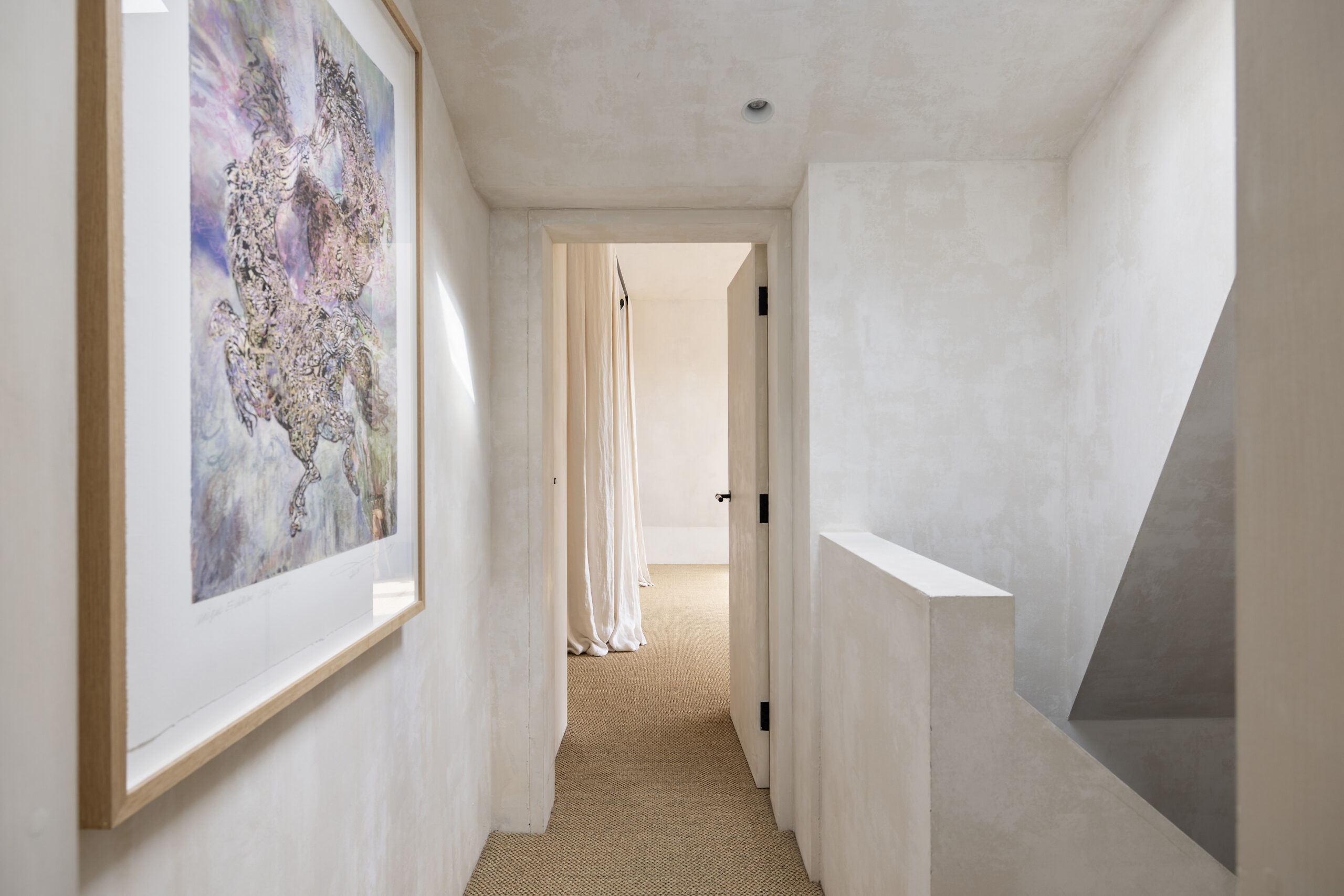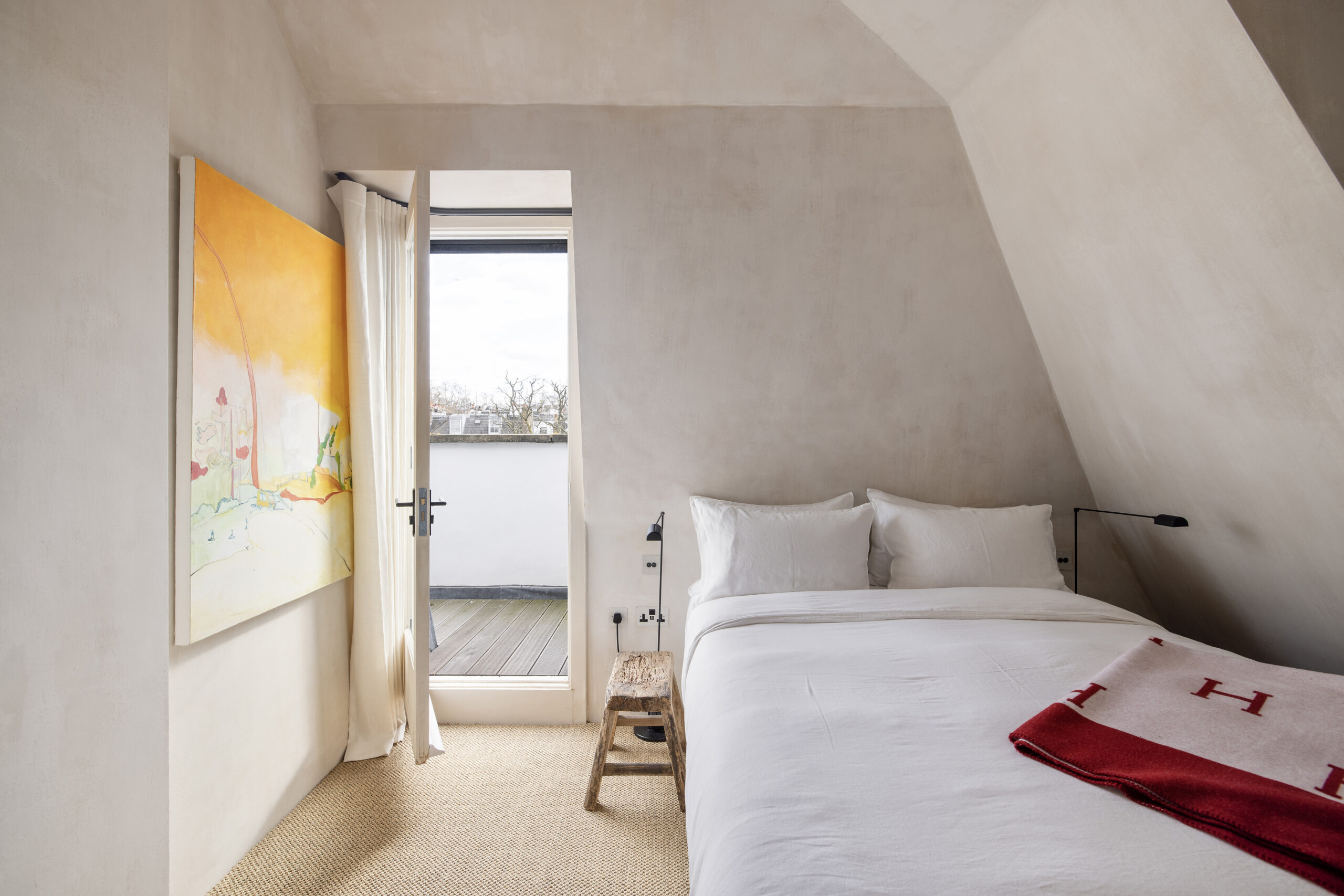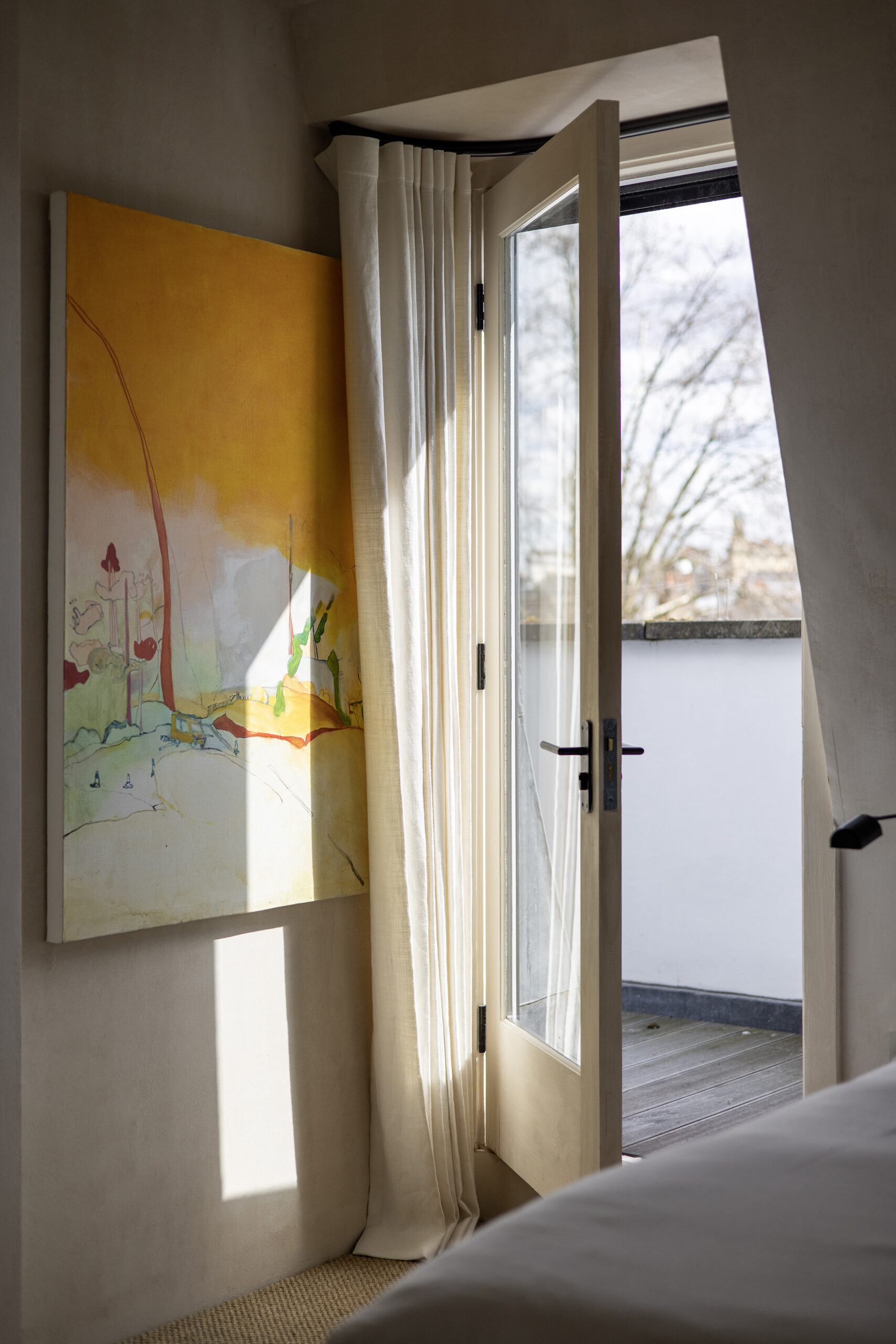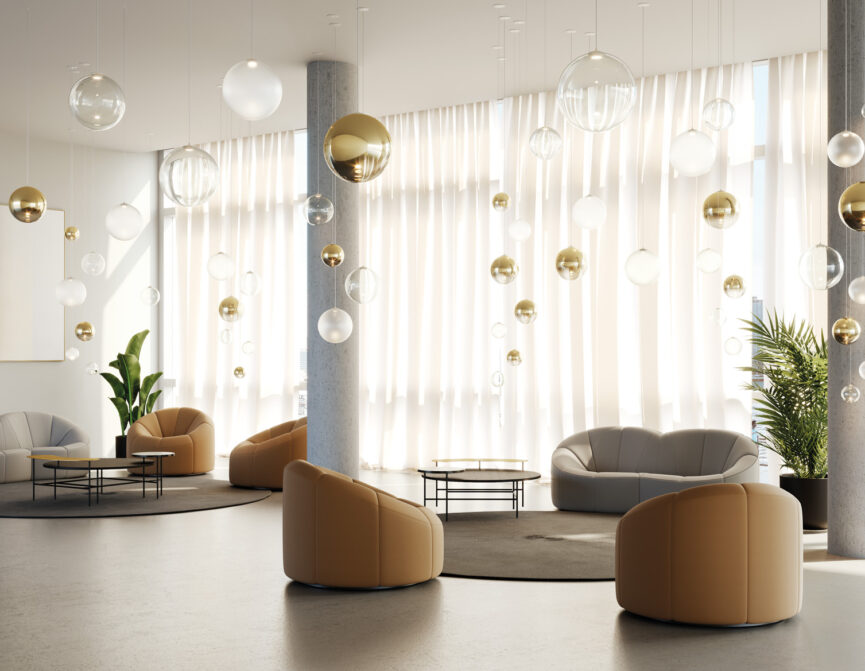The in-demand designer talks about retrofitting the space with timeless style and why saying goodbye is the hardest part.
Interior designer Saskia Blyth was the first port of call for the buyer of Blenheim Crescent, who was keen to replace new with old. For this converted artist’s studio, ensconced on a road of stucco-fronted townhouses in leafy Notting Hill, mirrored ceilings were replaced with wooden beams, crisp white walls were tempered with natural lime plaster and new rooms were carved out of thin air. Here, she tells us about her creative journey with a much-admired client, and how it grew to become a labour of love for all involved.
The difference in the property is staggering. When were you brought on board?
The client showed it to me just before the offer was accepted and it was very out of character for him to like something like that. Obviously, he loved the high ceilings and the big windows. I went to see it before the sale went through and we did a sort of recce on what would have to be done. I’ve done a few projects for him and his family in the past, so I’ve got quite a good feel of what he likes and dislikes, and he basically dislikes everything that’s new and shiny. The mirror ceiling had to go, yeah.
Can you give us an idea of the scope of the work involved?
We basically gutted it to make it to his style. He had quite a clear idea of what he wanted and he’s very involved in the entire process. He has amazing taste and he wasn’t shy of being brave, either. So we ripped out all the floors and most of the partitions and created a downstairs powder room, which wasn’t there previously – and a snug. We made both the bedrooms en suite, and we also took a bit of space out of the guest bedroom to make his en-suite bathroom a bit bigger, with a nice walk-in shower.
We also installed a fireplace which wasn’t there before, just because he wanted it to be a cosy space for him to hang out with his family and friends. We had a London company come in to do all the specialist wall finishes – that took a couple of weeks to do. And we put in a beautiful Boffi kitchen. You really get what you pay for with Boffi, it’s just incredible. There were no snags, you know, just absolutely divine – we placed the order for that during the first lockdown.
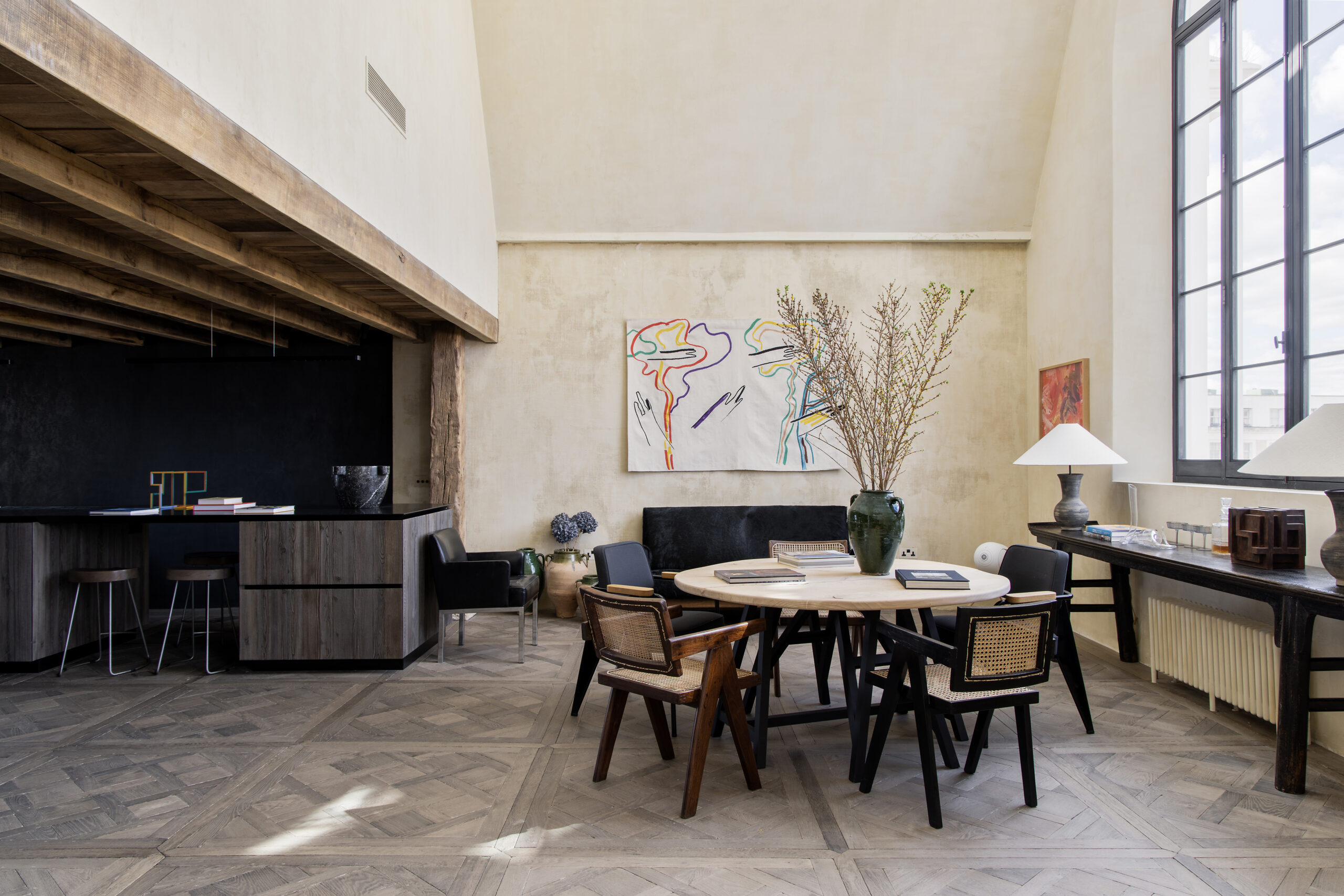
Did the pandemic hamper your plans in a particularly disruptive way – or any other teething issues that cropped up? How long was your timeline for this project in the end?
We had a few challenges along the way with COVID, getting access and getting things over from Europe to be installed. We got the keys during the first lockdown and during that time my client wasn’t based in London. Plus, we had to get consent from the managing agent because the other freeholder of the building had to approve before we started. Apart from that, we had a few challenges with people working on the project that came from Europe. The regulations were still quite strict, but we managed to get them in and they could get on with doing their bits, and we didn’t lose that much time over it. I think we did incredibly well on timing and on expenditure. Probably, all in all, it was six months – so it was fairly quick. It was a real success.
What was the team like working on the project?
Everyone who was involved in that project was great. We worked with a contractor called Sherlock London and we had an amazing site manager who really put his heart and soul into this project – I loved working with him. This was my first project with them and we’re working together again on new projects. The same with the timber floor people. I hadn’t worked with them before but hands down, I would work with them again any time. Their product is amazing and they were a pleasure to deal with. I loved everyone that I worked with on this project, actually.
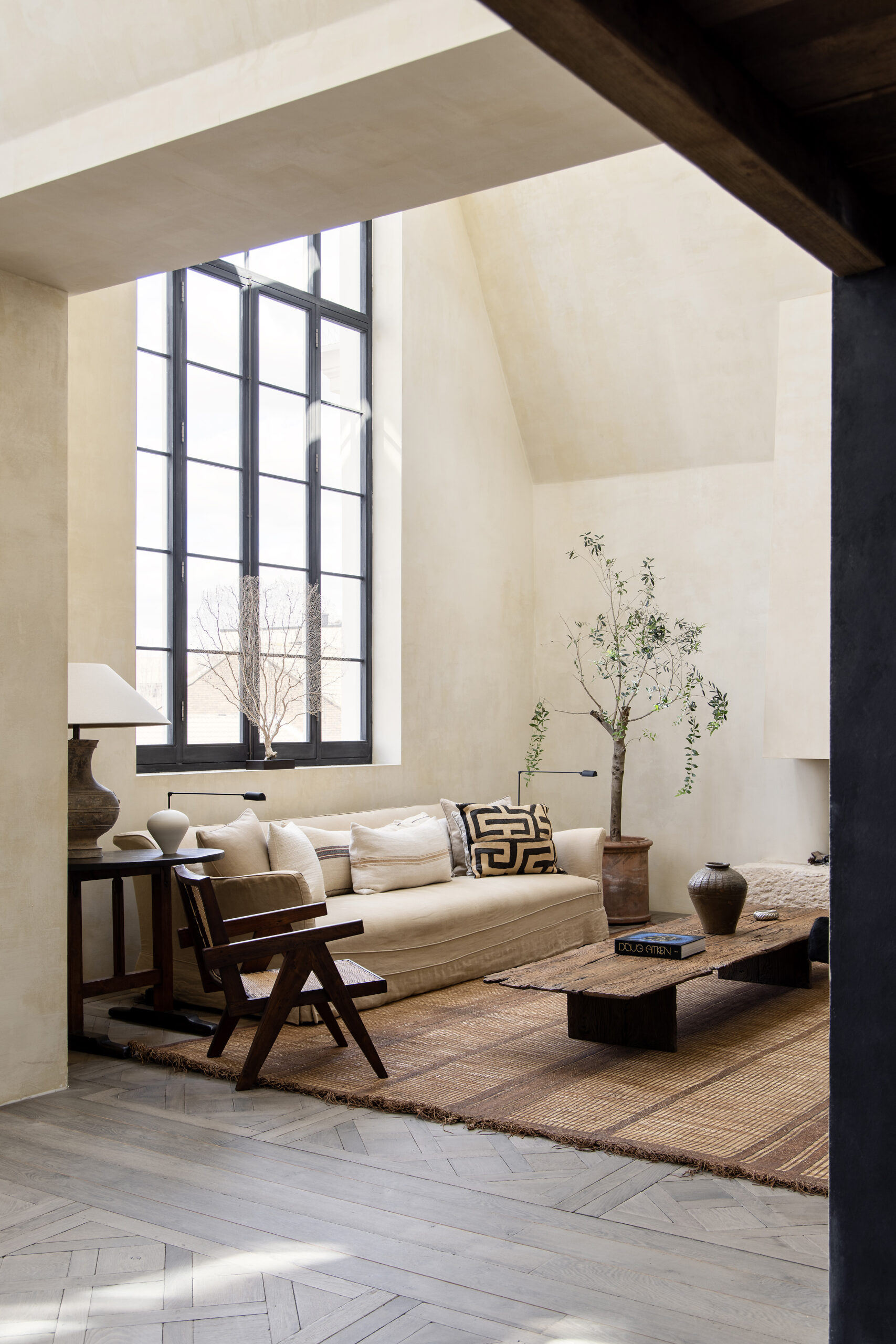
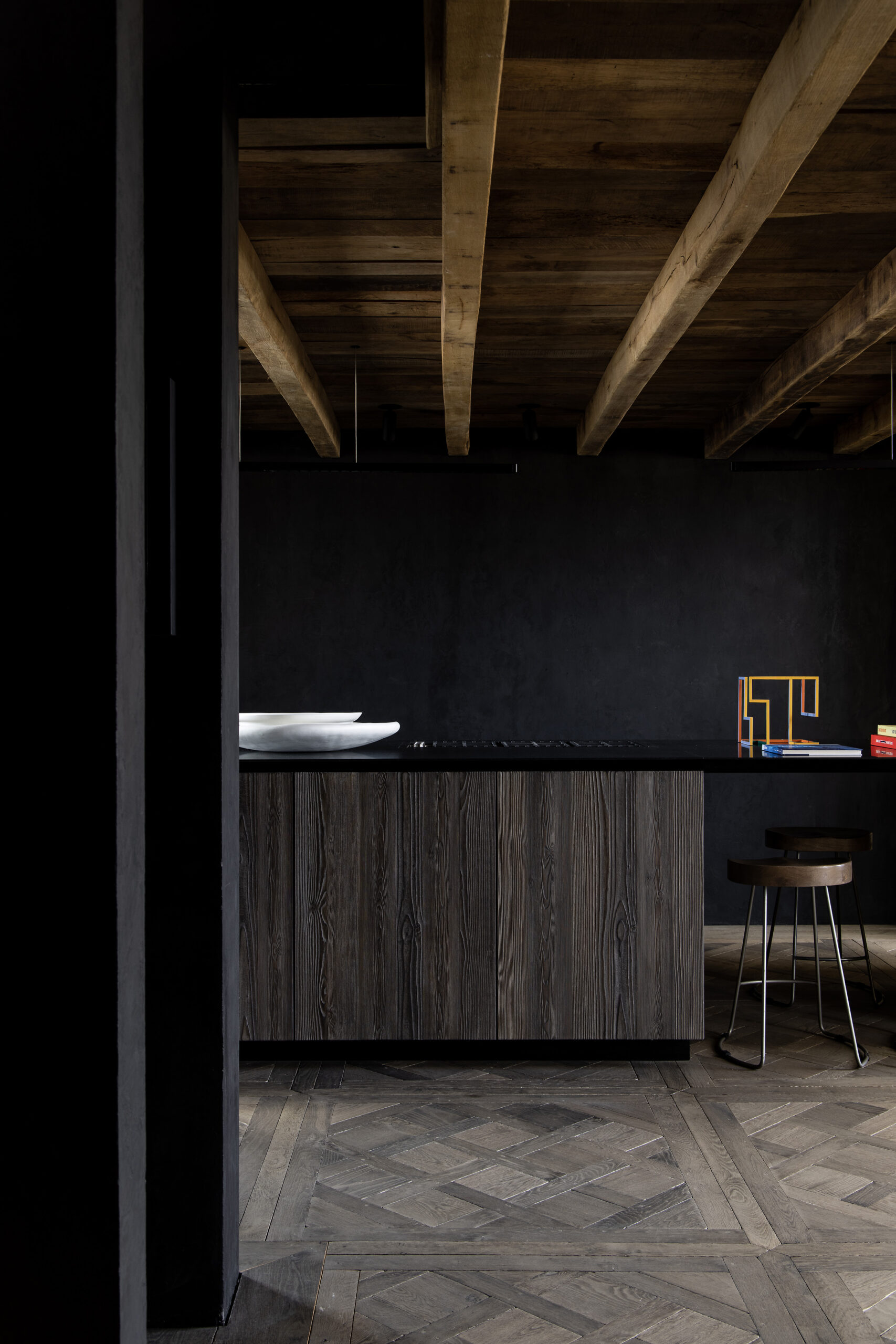

You mentioned that your client had an aversion for new things. Did this mean that you used a lot of reclaimed materials?
Yeah, he doesn’t like anything that looks shiny and new, so we sourced this antique flooring from Belgium – it’s called Parquet de Versailles. And in between one of the lockdowns, this company came over and installed it for us for a fraction of what we would have paid in the UK. And then we sourced all sorts of reclaimed timber beams. A lot of love went into this project and lot of sourcing. As much as the lockdown was annoying, it gave me and my team time to source the right items – that timber flooring, for example. We spent days and days finding the right company and getting samples. All in all, he was thrilled with the outcome.
What is the creative process like with a hands-on client?
We went through books together, through images and a few presentations with samples and fabrics. We had a few meetings on site. And yeah, I mean, apart from the lockdowns where, where he wasn’t in the country, he was quite hands-on. When he was abroad we would have video calls and I’d sent him photos of the programme. And, he would say: ‘Oh, I saw these amazing taps at a hotel in Switzerland. Can you source some for me?’ – so we found him the taps (matt black Dornbracht taps) and they went into the bathroom. He was very much involved in the creative side and getting it all the way he wanted it to be. It’s his London pied-à-terre – he does use it a lot, though.
A lot of love went into this project and lot of sourcing. As much as the lockdown was annoying, it gave me and my team time to source the right items.
- Saskia Blyth


What about the furniture – were you involved in sourcing any pieces?
We sourced all the furniture for the client. I spent many hours discussing colours and designs and finishes – as you know, he was very involved in the process. I absolutely loved working with him. The furniture is all made by my upholsterer, R. Kightley & Son, using Belgian linen fabric, which we sourced from several different places until we had all the colours exactly the way we wanted. A few pieces came from galleries dotted around London. Some were heirlooms that he brought along and a lot of the artwork came along with him. It’s a real sort of mixture and he loves it.
What was your favourite part of the project?
My favourite part – and also the most challenging part – was handing it over. When the client sees it for the first time, it’s amazing. All the stress and the challenges just automatically melt away. It’s a bit like going through nine months of pregnancy! You forget about the morning sickness, the hundreds of kilos that you put on. The baby arrives and you think: ‘Oh my gosh, this is amazing. When can I go through labour again, please?’
But during the build you spend so much time waking up at two o’clock in the morning thinking: ‘I forgot about this, I didn’t put that in. I hadn’t asked him this.’ You get so attached to a project that when you hand it over, it feels like a bit of an anti-climax. Although with this specific client I am still always doing stuff, so I have been fortunate to be able to go back.



